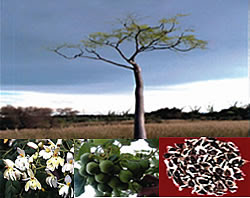Shepherd leads experts to ancient Buddha cave paintings

The original news article about the findings of Mustang Caves for Learning is given below. The original article link is here.
Maseeh Rahman
Friday May 4, 2007
Guardian Unlimited
One of 55 panels depicting the story of Buddha's life,
discovered in a 12th century cave in the Mustang area of Nepal. Photograph: AP
A shepherd in a remote region of Nepal near the border with Tibet has been instrumental in the discovery of an extraordinary art treasure that lay hidden from the world for centuries - a collection of 55 exquisite cave paintings depicting the life of Buddha.
A partially collapsed cave containing the 12th to 14th century depictions of scenes from Buddha's life was unearthed last month by a team of Italian, US and Nepalese conservators and archaeologists in Mustang, a lost kingdom long forbidden to foreigners in the high Himalayas, 250-km north-west of Kathmandu.
"Finding the cave was almost like a miracle," said Luigi Fieni, a member of the team that used ice axes to cut its way into the inaccessible 3,400m-high cave in a region that for centuries was part of greater Tibet before being taken over by Nepal.
Foreigners were only permitted to enter Mustang in 1992, and Mr Fieni's team began work nine years ago, restoring the spectacular wall paintings in a 15th century Tibetan monastery.
When they inquired about other art treasures in the region, a villager remembered that as a boy he had seen a cave full of colourful paintings.
"Unlike the murals in the monastery, the Mustang cave paintings do not reveal a Tibetan but a strong Indian influence, including the animals they depict - leopard, tiger, monkey and deer," Mr Fieni said. "In fact, the style evokes the fabulous cave paintings of Ajanta, which predate the Mustang caves by several centuries."
The location of the cave has been kept secret to deter art smugglers, but the team call it "the snow leopard cave" as the animal's footprints were found inside.
"The cave paintings have been affected by wind and rain and really need restoration," Mr Fieni said. "It's a long process, and we're hoping now to raise funds for the project."
The simultaneous discovery of ancient Tibetan manuscripts in nearby caves has led to speculation that the caves might have been a teaching retreat on the lines of the Buddhist university in Nalanda.
Mustang is of special significance to Buddhist experts because it is perhaps the only region where Tibetan culture and religion have survived over the centuries virtually untouched by time and modern Chinese colonisation.
"The Mustang people are Tibetans. They speak the Tibetan language; their origin is in the Tibetan culture," said Lama Guru Gyaltsen.
The opening up of the region has brought inevitable challenges to Mustang way of life. Young men are leaving the tiny kingdom in search of work, and a modern road through the capital, Lo Manthang, is certain to affect the tradition of rearing horses for transport and agriculture. Building techniques using mud are likely to be abandoned in favour of modern construction methods.


Comments